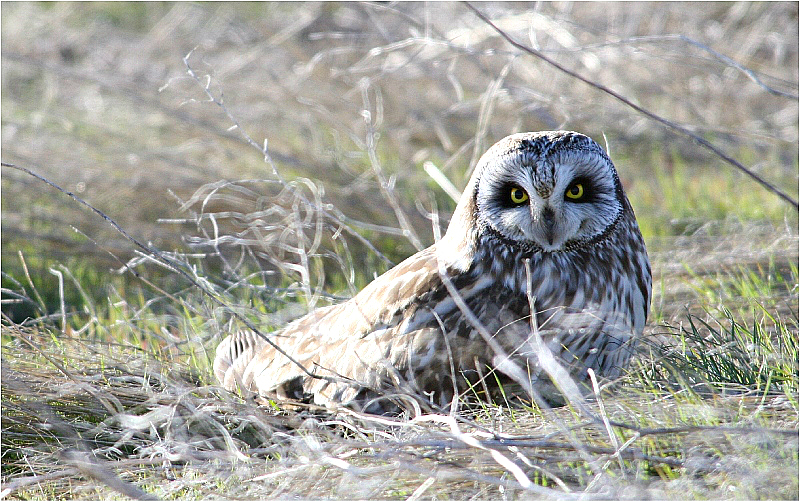This owl gets its name from two tiny feather tufts that may or may not be raised and evident. Most owls are nocturnal, so the Short-Eared is an exception to the rule. We see them in open country, usually on a fence post or on the ground. They seem to favor this type of country where they can more easily spot the voles and mice that make up a large part of their diet.
This owl of open grasslands is widely distributed over the world. Because of its wide distribution, it has many “nick-names”: Evening Owl, Marsh Owl, Bog Owl, Swamp Owl, Grass Owl, Meadow Owl, Flat-Faced Owl, and Mouse-Hawk. It spends more time on the wing than other owls, flying low over fields and marshes with wings in a V configuration (dihedral). It flaps its wings in a floppy, moth-like manner.
Because they live in the open, they are a quiet species. Visual displays are more useful than vocal ones in open country. The abundance of trees makes the use of sound more vital in woodlands. Short-Eared Owls rely on their coloration for camouflage, but will feign death to avoid detection. When they do sing, it is a pulsating “voo-hoo-hoo”.
Nests are constructed by the female (who is darker colored than the male) on the ground. It is a scrape lined with grass, herb stalks, and feathers plucked from her breast. She will lay anywhere from 4 to 14 eggs – depending upon yearly rodent cycles and their abundance. It is interesting how environmental conditions can subconsciously affect physiology.
Our most frequent sightings of this bird have been in the BLM lands on the way to Milner Dam, and also in the open country on the way to north Heglar Canyon.
(Dave Hanks)

Hiding in the barrow-pit along the Milner road


